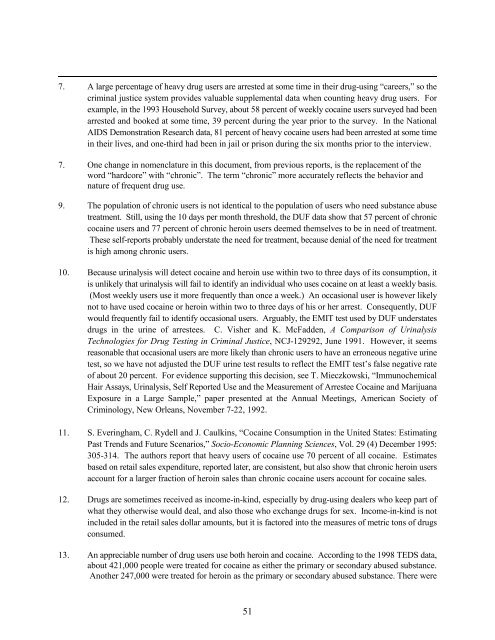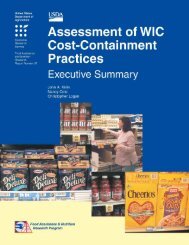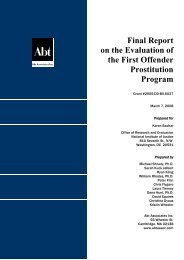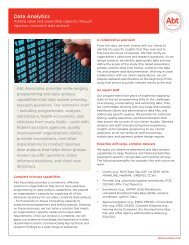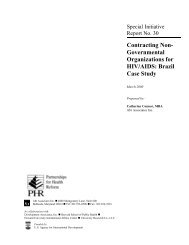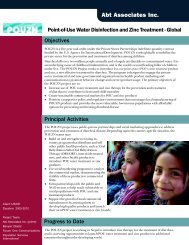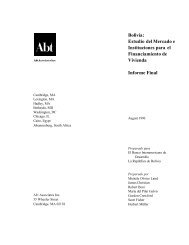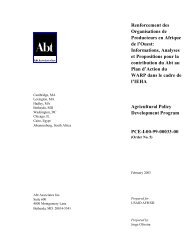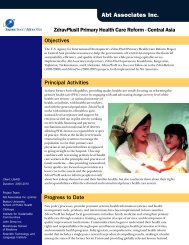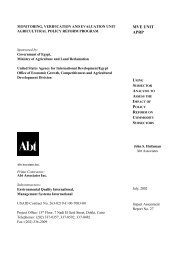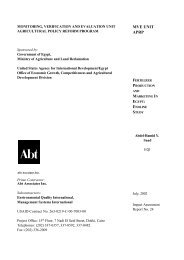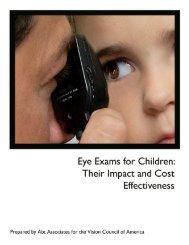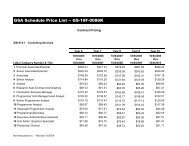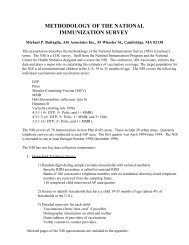What America's Users Spend on Illegal Drugs 1988-2000 - National ...
What America's Users Spend on Illegal Drugs 1988-2000 - National ...
What America's Users Spend on Illegal Drugs 1988-2000 - National ...
- No tags were found...
You also want an ePaper? Increase the reach of your titles
YUMPU automatically turns print PDFs into web optimized ePapers that Google loves.
7. A large percentage of heavy drug users are arrested at some time in their drug-using “careers,” so thecriminal justice system provides valuable supplemental data when counting heavy drug users. Forexample, in the 1993 Household Survey, about 58 percent of weekly cocaine users surveyed had beenarrested and booked at some time, 39 percent during the year prior to the survey. In the Nati<strong>on</strong>alAIDS Dem<strong>on</strong>strati<strong>on</strong> Research data, 81 percent of heavy cocaine users had been arrested at some timein their lives, and <strong>on</strong>e-third had been in jail or pris<strong>on</strong> during the six m<strong>on</strong>ths prior to the interview.7. One change in nomenclature in this document, from previous reports, is the replacement of theword “hardcore” with “chr<strong>on</strong>ic”. The term “chr<strong>on</strong>ic” more accurately reflects the behavior andnature of frequent drug use.9. The populati<strong>on</strong> of chr<strong>on</strong>ic users is not identical to the populati<strong>on</strong> of users who need substance abusetreatment. Still, using the 10 days per m<strong>on</strong>th threshold, the DUF data show that 57 percent of chr<strong>on</strong>iccocaine users and 77 percent of chr<strong>on</strong>ic heroin users deemed themselves to be in need of treatment.These self-reports probably understate the need for treatment, because denial of the need for treatmentis high am<strong>on</strong>g chr<strong>on</strong>ic users.10. Because urinalysis will detect cocaine and heroin use within two to three days of its c<strong>on</strong>sumpti<strong>on</strong>, itis unlikely that urinalysis will fail to identify an individual who uses cocaine <strong>on</strong> at least a weekly basis.(Most weekly users use it more frequently than <strong>on</strong>ce a week.) An occasi<strong>on</strong>al user is however likelynot to have used cocaine or heroin within two to three days of his or her arrest. C<strong>on</strong>sequently, DUFwould frequently fail to identify occasi<strong>on</strong>al users. Arguably, the EMIT test used by DUF understatesdrugs in the urine of arrestees. C. Visher and K. McFadden, A Comparis<strong>on</strong> of UrinalysisTechnologies for Drug Testing in Criminal Justice, NCJ-129292, June 1991. However, it seemsreas<strong>on</strong>able that occasi<strong>on</strong>al users are more likely than chr<strong>on</strong>ic users to have an err<strong>on</strong>eous negative urinetest, so we have not adjusted the DUF urine test results to reflect the EMIT test’s false negative rateof about 20 percent. For evidence supporting this decisi<strong>on</strong>, see T. Mieczkowski, “ImmunochemicalHair Assays, Urinalysis, Self Reported Use and the Measurement of Arrestee Cocaine and MarijuanaExposure in a Large Sample,” paper presented at the Annual Meetings, American Society ofCriminology, New Orleans, November 7-22, 1992.11. S. Everingham, C. Rydell and J. Caulkins, “Cocaine C<strong>on</strong>sumpti<strong>on</strong> in the United States: EstimatingPast Trends and Future Scenarios,” Socio-Ec<strong>on</strong>omic Planning Sciences, Vol. 29 (4) December 1995:305-314. The authors report that heavy users of cocaine use 70 percent of all cocaine. Estimatesbased <strong>on</strong> retail sales expenditure, reported later, are c<strong>on</strong>sistent, but also show that chr<strong>on</strong>ic heroin usersaccount for a larger fracti<strong>on</strong> of heroin sales than chr<strong>on</strong>ic cocaine users account for cocaine sales.12. <strong>Drugs</strong> are sometimes received as income-in-kind, especially by drug-using dealers who keep part ofwhat they otherwise would deal, and also those who exchange drugs for sex. Income-in-kind is notincluded in the retail sales dollar amounts, but it is factored into the measures of metric t<strong>on</strong>s of drugsc<strong>on</strong>sumed.13. An appreciable number of drug users use both heroin and cocaine. According to the 1998 TEDS data,about 421,000 people were treated for cocaine as either the primary or sec<strong>on</strong>dary abused substance.Another 247,000 were treated for heroin as the primary or sec<strong>on</strong>dary abused substance. There were51


